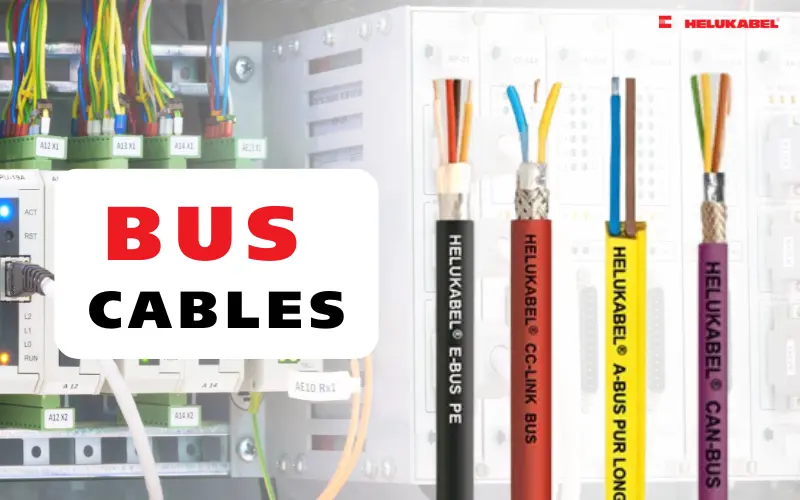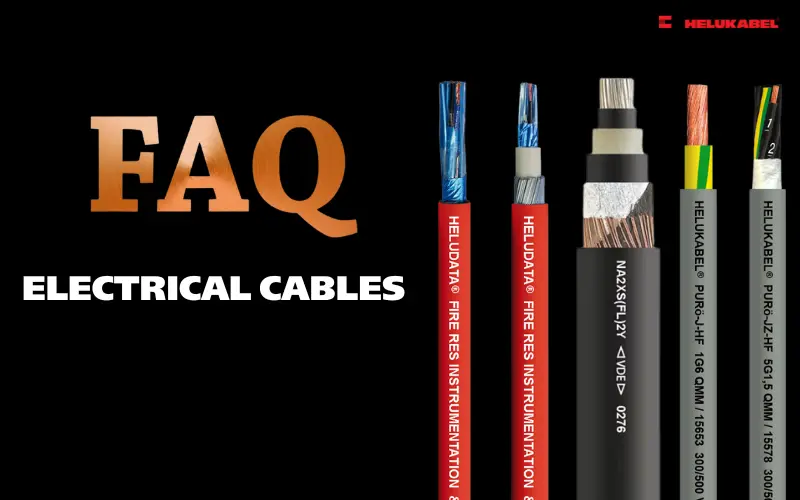How to calculate the tensile strength of cables and wires
Learn which formula you can use to determine the maximum permissible tensile load of permanently installed or moving cables and wires.
1. Overview of tensile strength
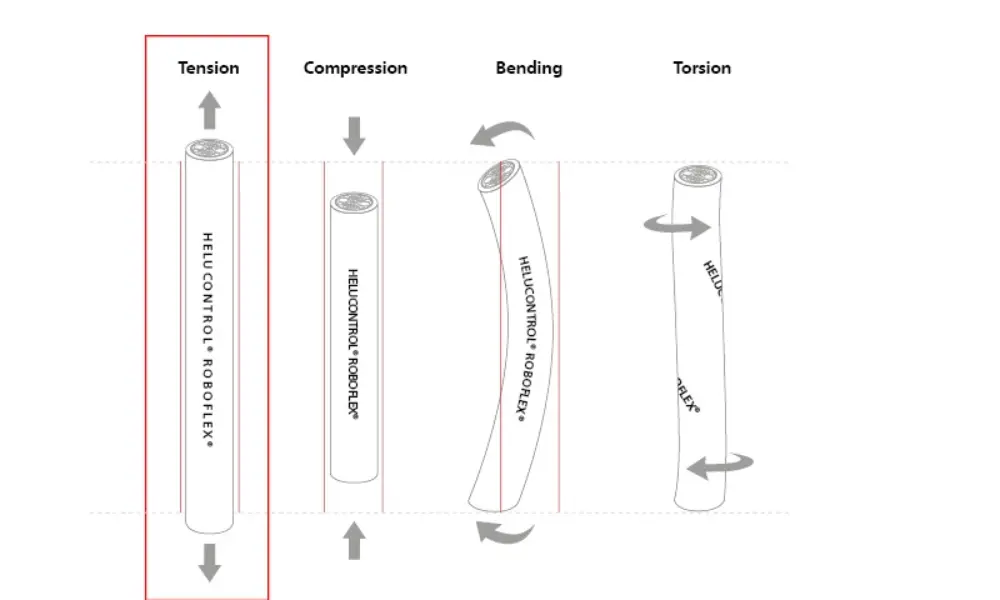
1.1 What is tensile strength?
Tensile strength is the maximum tensile stress a material can withstand before breaking or fracturing. In other words, it represents the material’s ability to resist being pulled apart under tension.
Tensile strength is typically expressed in units of force per unit area, such as pounds per square inch (psi) or newtons per square meter (N/m², also known as pascals – Pa).
When a material is subjected to a tensile force, it elongates in the direction of the applied load. This elongation occurs because the atomic or molecular bonds within the material are being stretched. However, every material has a certain tensile limit; once this limit is exceeded, the material will fail or break.
1.2 Distinguishing between tensile strength and tensile Stress
Tensile strength and tensile stress are closely related concepts and can easily be confused.
| Tensile stress | Tensile strength | |
| The internal tensile force per unit area within a material when it is subjected to a pulling (tensile) load. | The maximum tensile stress a material can withstand before breaking or fracturing. | |
| Unit | N/mm² or MPa | N/mm² or Mpa |
| Characteristics |
| · A fixed mechanical property of the material (similar to a “tolerance threshold”). · Unaffected by the specimen’s size (depends solely on the inherent nature of the material). |
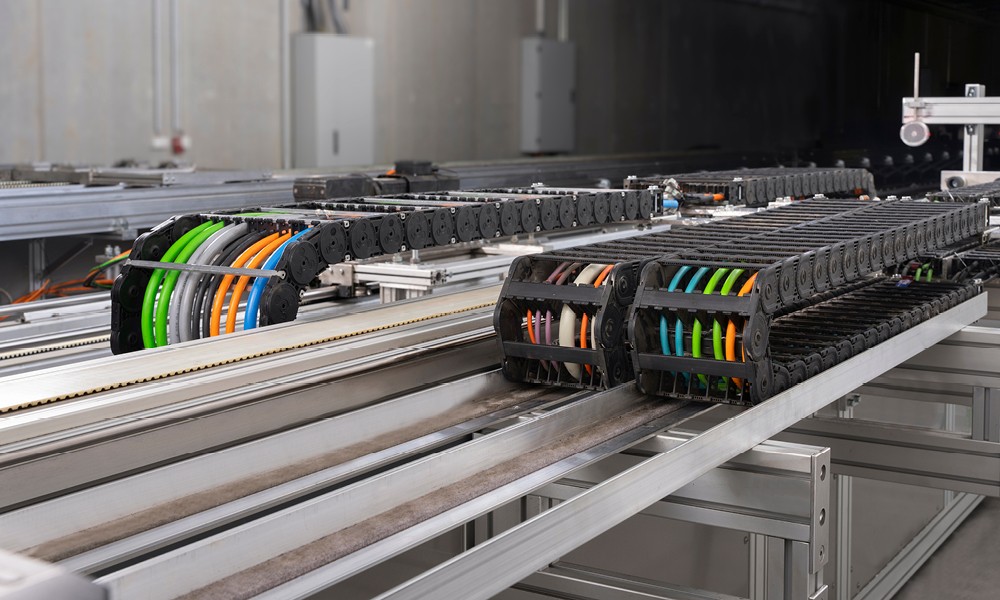
Dynamic cables are subject to continuous tensile forces along with bending, twisting, and vibration, thus requiring higher tensile strength
1.3 Factors affecting the permissible tensile strength of electrical cables
The maximum tensile force an electrical cable can withstand depends on three main factors:
1) Cable structure and materials
- Conductor core: Copper conductors generally have higher tensile strength compared to aluminum or alloy cores.
- Protective sheath and reinforcement layers: Materials such as braided steel or fiberglass significantly improve mechanical strength, especially for cables used in harsh environments.
2) Conductor core diameter (copper or other materials)
- A larger conductor diameter allows the cable to withstand higher tensile forces because the increased cross-sectional area distributes the load more evenly, reducing the risk of breakage.
3) Operating conditions (fixed or dynamic)
- Fixed cables: Experience tensile stress mainly during installation, requiring lower tensile strength limits.
- Dynamic cables (e.g., crane cables, reeling cables): Subject to continuous tensile forces along with bending, twisting, and vibration, thus requiring higher tensile strength.
- Environmental conditions: Temperature, humidity, chemicals, or strong winds can also affect a cable’s tensile performance.
2. The meaning of tensile strength for electrical cables
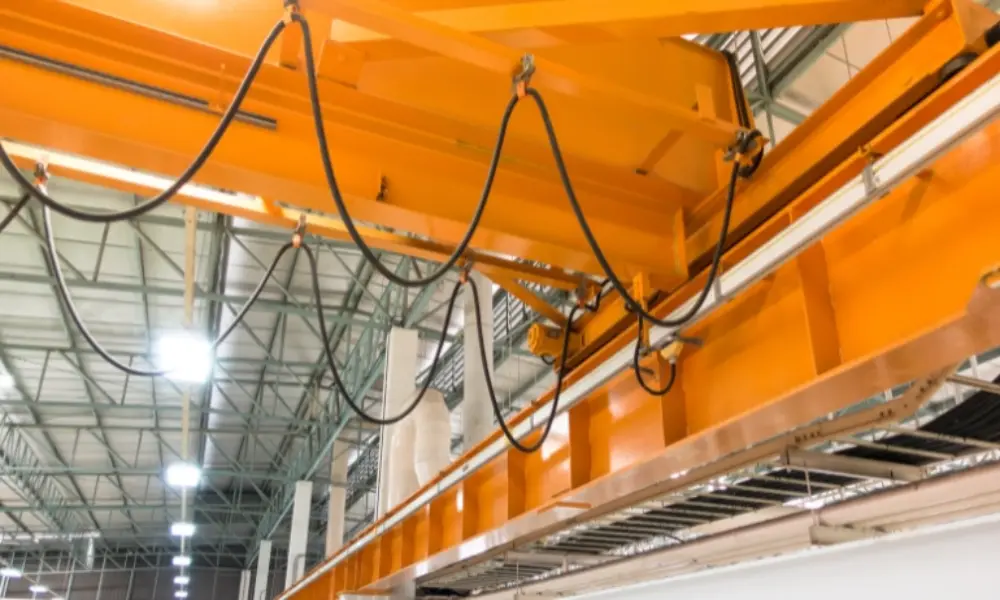
In heavy-duty applications, cables must withstand forces applied per unit cross-sectional area
During installation and operation, electrical cables are frequently subjected to tensile forces - for example, when being pulled through conduits, installed in cable trays, or routed through cable chains in moving machinery. Understanding tensile strength helps prevent premature damage, ensuring safety, reliability, and performance in harsh working environments.
Therefore, accurately calculating the maximum allowable pulling force before installation is critical.
2.1 Preventing permanent deformation
Industrial cables must resist excessive elongation to maintain functionality. If plastic deformation occurs, the insulation layer can be damaged and signal transmission interrupted. Exceeding the maximum allowable tensile load even once can damage the conductor, insulation, or the entire cable structure. This can lead to production downtime, high repair costs, and safety risks.
2.2 Withstanding mechanical stress and strain
In heavy-duty applications, electrical cables must withstand forces applied per unit cross-sectional area. Materials with high tensile strength help minimize elongation, reducing the risk of cable failure during pulling or reeling operations.
2.3 Ensuring workplace safety
Cables with inadequate tensile strength can snap, posing serious hazards. Using cables with high breaking strength reduces the risk of accidents.
2.4 Extending cable lifespan
Durable cables can endure thousands of bending and reeling cycles, reducing machine downtime and replacement costs.
3. Formula for calculating tensile strength in electrical cables
3.1 Formula for calculating permissible tensile strength in fixed installation
For fixed installation cables with concentric or multi-stranded conductors, the allowable tensile load (F) is commonly calculated using the formula:
Maximum tensile strength (Ftu) = 50N x Number of core x Cross section (mm²)
Example:
A cable with 4 cores and a cross section of 2.5 mm² has a maximum tensile strength of:
Ftu = 50 × 4 × 2,5 = 500 N
3.2 Formula for calculating permissible tensile strength of medium voltage power cables (XLPE-insulated 6/10 kV, 12/20 kV, 18/30 kV)
The maximum allowable tensile strength is the greatest pulling force that a cable can withstand when pulled using a pulling head - not applicable to armoured cables. Formula for calculating the maximum pulling tension:
P= Number of core x Cross section x Permissible pulling tension (N/mm²)
Permissible pulling tension:
- For Cu conductor: 50 N/mm²
- For Al conductor: 30 N/mm²

The permissible pulling tension of dynamic applications is significantly reduced
3.3 Permissible tensile strength limits for electrical cables
Depending on the installation method, the permissible tensile strength values for cables are specified as follows:
- Fixed installation cables and wires: Maximum pulling tension up to 50 N/mm²
- 15 N/mm² applies to flexible cables under static tensile load in fixed systems, used for current circuits.
- Cables for dynamic applications (e.g., drag chains): The permissible pulling tension is significantly reduced.
(According to VDE 0298-3 standard)
In particular, pre-assembled cables usually have much lower permissible pulling tension due to the need to account for the mechanical strength of connectors and plugs.
If the above values are exceeded, a strain-relieving element or similar protective measures should be used to prevent cable damage. The connection of the strain relief element to the cable must ensure no harm to the cable.
3.4 Tensile strength of some insulation and outer sheath materials
| Insulation and outer sheath material | Tensile strength (N/mm²) |
| PVC | 10-25 |
| PP | 20-35 |
| PUR | 30-45 |
| TPE-E | 30 |
| TPE-O | 20 |
| Silicone, EPR | 5-10 |
| CR | 10-20 |
| FEP | 15-25 |
| Cross-linked | 8-13 |
4. Industries using high-tensile strength cables
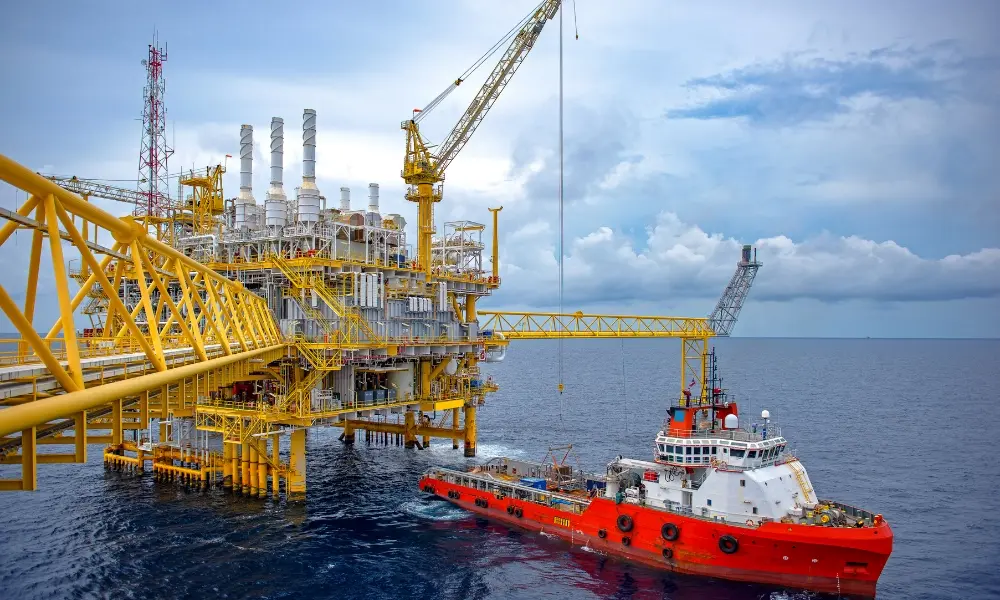
High-tensile strength electrical cables are designed to withstand heavy loads, continuous pulling forces, and harsh operating environments. With superior resistance to abrasion, torsion, and corrosion, these cables are widely applied across industrial sectors that demand high reliability and long service life.
Industries utilizing high-tensile strength cables:
- Mining: Withstands extreme mechanical forces in draglines, mining shovels, and conveyor systems.
- Material handling: Used for cranes, forklifts, and automatic cable reeling systems on drums.
- Steelmaking and metal processing: Capable of handling high temperatures and heavy loads while ensuring stable performance.
- Offshore and marine: Corrosion-resistant cables meeting the rigorous demands of winches, cranes, and lifting equipment.
- Industrial automation: Flexible, torsion-resistant cables for robots and continuous-motion systems.
5. Some high-tensile strength cables from HELUKABEL
HELUKABEL offers a wide range of high-tensile strength cables that meet international standards, ensuring maximum performance and safety for all applications
| Type of cable | Cable name | Features | Part no. |
| Drag chain cables | MULTIFLEX 512®-PUR | High tensile strength | 22501 |
| MULTISPEED® 500-PUR | |||
| MULTISPEED® 500-TPE | |||
| Trailing cables | HELUSPREADER YSLTÖ-J s | max. Tensile load 2000 N | |
| TROMMPUR®-H | Max 25 N/mm2 | 77144 | |
| NEOPREN | Up to 4500 N | 25001 | |
| Robot cables | HELUDATA® ROBOFLEX®-D PUR UL/CSA | 11022427 | |
| HELUCONTROL® ROBOFLEX® PUR UL/CSA | 11022017 | ||
| HELUPOWER® ROBOFLEX®-D PUR UL/CSA | 11022453 | ||
| DNB cables | A-V(ZN)11Y | Max. tensile force: 650 N | 80382 |
| HELUCOM® A/I-DQ(ZN)H(SWA)H | Max. tensile force: 5000 N | 806034 | |
| HELUCOM® FS120 A/I-DQ(ZN)(SR)H Cca | Max. tensile force: 3000 N | 11017454 |
If you still have any concerns or questions, don't hesitate to reach out to HELUKABEL Vietnam's engineering team promptly for detailed assistance.
HELUKABEL® Vietnam
| Address | 905, Nguyen Kiem Street, Hanh Thong Ward, Ho Chi Minh City 700000, Vietnam |
| info@helukabel.com.vn | |
| Hotline | +84 28 77755578 |
| Website | www.helukabel.com.vn |
| Discover our products and place orders | Tiki | Shopee | Lazada | Product finder |
| Follow us on | Facebook | LinkedIn | Instagram | Youtube | Zalo | WhatsApp | Tiktok | Spotify |

